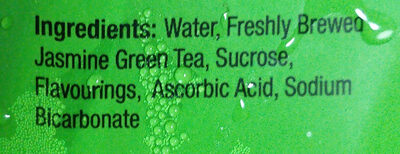Pokka Jasmin Green tea - 1.5L
Halaman produk ini tidak lengkap. Anda boleh tolong lengkapkannya dengan menyuntingnya dan menambahkan lebih banyak data dari foto yang kita ada, atau dengan mengambil lebih banyak foto menggunakan aplikasi untuk Android atau iPhone / iPad. Terima kasih!
×
Barkod: 8888196173423 (EAN / EAN-13)
Kuantiti: 1.5L
Pembungkusan: en:Pet 1 bottle, en:Pp cap
Jenama: Pokka
Kategori-kategori: en:Plant-based foods and beverages, en:Beverages, en:Hot beverages, en:Plant-based beverages, en:Teas, en:Green teas, en:Tea-based beverages, en:Still soft drink with tea extract, en:Still soft drink with tea extract flavoured with sugar
Label, pensijilan, anugerah:
Halal, ISO 22000, en:No preservatives, en:HACCP
Tempat pengilangan atau pemprosesan: Singapore
Country: Singapura
Matching with your preferences
Environment
Carbon footprint
Pembungkusan
Pangangkutan
Report a problem
Sumber-sumber data
Produk ditambah pada oleh openfoodfacts-contributors
Suntingan terakhir halaman produk pada oleh ibwocoruytrc.
Halaman produk juga diedit oleh clockwerx, kiliweb, packbot, yuka.ZWFzRkRMc0d0TXN2bE04bXdCSGxwdTRrbXNTYlhGbVNNdTVLSVE9PQ, yuka.sY2b0xO6T85zoF3NwEKvlkdlbovduBHdLB76pG_R6tm0LLPRYfBD27T2H6o.








